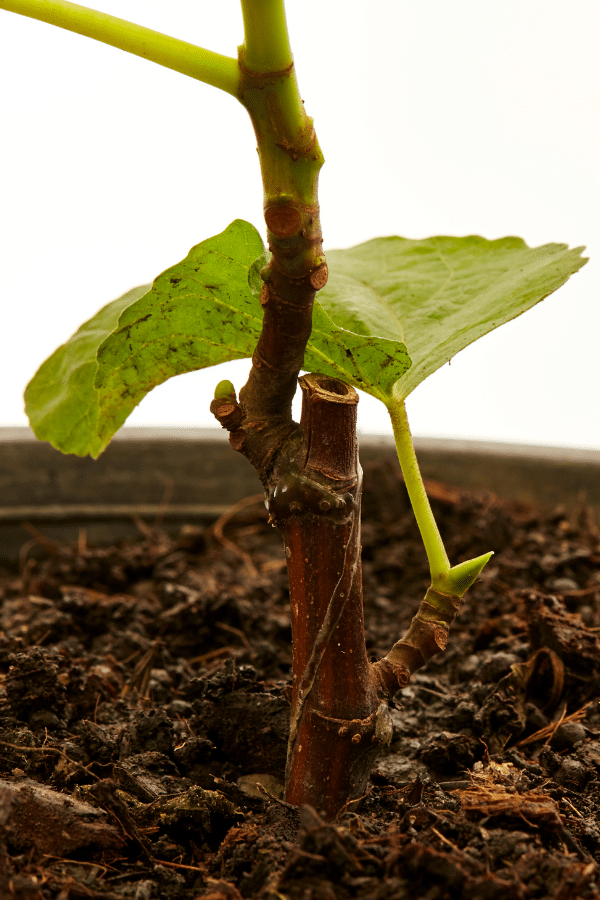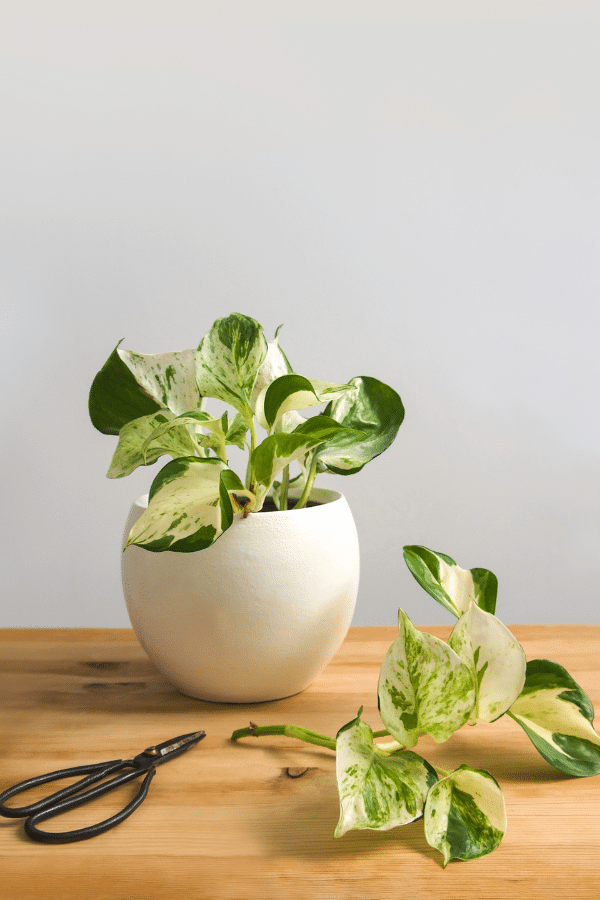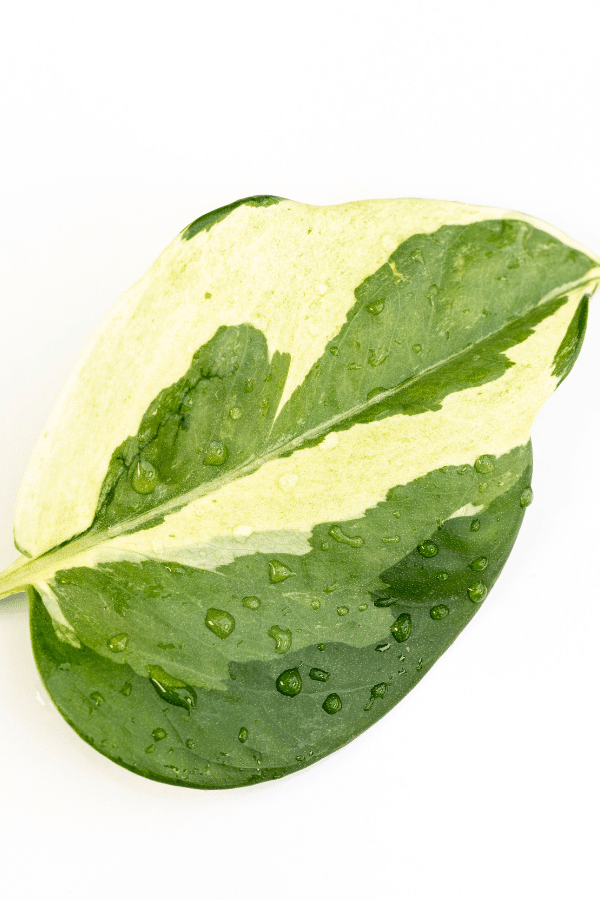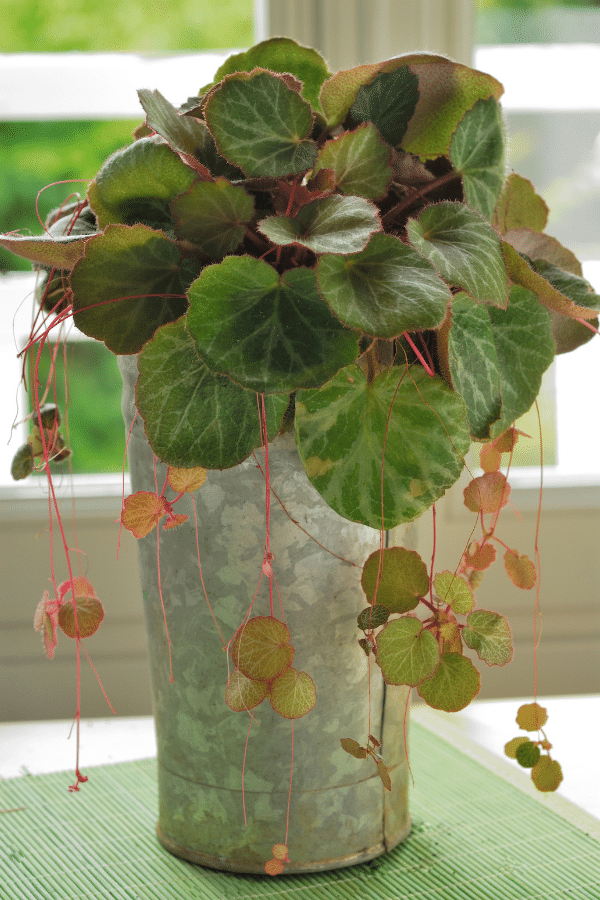Ficus Fertilizer Guide
Ficus plants, also known as Fig Trees, are a popular choice for indoor and outdoor gardening. These versatile plants can adapt to a variety of climates, making them a great option for both novice and experienced gardeners. Ficus plants require well-draining soil and regular watering, but they may also benefit from fertilization.
In this article, we will discuss the basics of fertilizing Ficus plants, including the type of fertilizer to use, when to apply it, and how to avoid over-fertilizing. By following these guidelines, you can ensure that your Ficus trees stay healthy and thrives. So, whether you’re growing a Ficus in your home or in your garden, this article will provide you with the knowledge you need to keep your plant in top condition from a fertilization perspective.

When to Fertilize Ficus Plants
Ficus plants should be fertilized during their active growing season, which is typically in the spring and summer for houseplants. This is when the plant is producing new growth and will benefit the most from the nutrients provided by the fertilizer. It’s best to avoid fertilizing during the dormant period, usually fall and winter, as the plant’s growth slows down and the excess fertilizer may lead to leaf burn or other problems. However, if your plant still puts out new growth during fall and winter, you may continue to fertilize the plant.
When you start fertilizing a Ficus for the first time, it’s important to follow the package instructions for the fertilizer you are using. The amount and frequency of application will vary depending on the size of the plant and the specific fertilizer you are using. As a general rule, it’s best to start with a lower amount of fertilizer and gradually increase it over time, rather than applying a large amount all at once.
It’s also a good idea to check the soil moisture before fertilizing, and to keep an eye on the plant’s leaves. If the leaves are yellow or brown and falling off, it may be an indication of over-fertilization. Of course, it could also be numerous other factors. In that case, reduce the amount of fertilizer or stop fertilizing until the leaves return to normal.
How Often to Fertilize Ficus Plants
The frequency at which you should fertilize your Ficus plants will depend on several factors, including the type of fertilizer you are using and the size of the plant. As a general rule, it’s best to start with a lower frequency and gradually increase it over time.
For slow-release fertilizers, it’s recommended to apply it once every 3-4 months. For liquid fertilizers, it’s recommended to apply it every 4-6 weeks, or as directed on the package instructions. However, if you’re using a fertilizer that has to be mixed in with water, you may be able to fertilize every single time you water your Ficus plants.
It’s also important to consider the condition of the plant when determining the frequency of fertilization. If the plant is showing signs of nutrient deficiencies, such as yellowing leaves or slow growth, it may benefit from more frequent fertilization. On the other hand, if the plant is growing vigorously and the leaves are dark green and healthy, you may be able to reduce the frequency of fertilization.
Always assess the soil moisture and the plant’s leaves before fertilizing. If the leaves are yellow and wilting or the tips are brown or you see fertilizer build up in the top layer of soil, it may be an indication of over-fertilization. In this case, reduce the frequency or amount of fertilizer or stop fertilizing until the leaves return to normal. Be sure to remove over-fertilized soil as you see it and if you are certain you have overdone it on fertilizer, repot with fresh soil right away.
Start with a lower frequency when starting out fertilizing your Ficus plants. Monitor how the plant is progressing and increase or decrease fertilizing.
Ingredients to Look For in Ficus Fertilizer
Fertilizers are a combination of essential nutrients that plants need for healthy growth and development. The primary ingredients in most fertilizers are nitrogen, phosphorus, and potassium, also known as N-P-K, and they are often referred to as the “macronutrients” because plants require them in relatively large quantities.
- Nitrogen (N) – Nitrogen is essential for leaf growth and the development of a strong stem and roots. It helps to promote healthy green leaves and increases the rate of photosynthesis.
- Phosphorus (P) – Phosphorus is important for root development, energy transfer, and the formation of blooms and fruits. It helps to promote strong root growth and seed formation.
- Potassium (K) – Potassium helps to regulate water balance in the plant, improves overall plant health, disease resistance, and improves the quality of fruits and vegetables.
An ideal NPK ratio is a gentle formula of 3-1-2, it can also be 6-2-4 or 9-3-6. This ratio will help give optimal nutrition and help develop healthy leaves. Other ingredients, such as micronutrients, may also be included in fertilizers. Micronutrients, such as iron, zinc, and manganese, are required in smaller quantities but are still essential for the plant’s growth and development.
It’s important to choose the right fertilizer for your Ficus plant, with the right balance of macronutrients and micronutrients, and to follow the package instructions for the right amount and frequency of application. It’s also important to monitor the plant’s condition and adjust the fertilizer as needed.
Nitrogen
Nitrogen is one of the three primary ingredients in most fertilizers, along with phosphorus and potassium. Nitrogen is an essential nutrient for plants, as it plays a crucial role in the growth and development of leaves, stems, and roots.
When nitrogen is applied, it helps to promote the growth of healthy green Ficus leaves, strong stems and root development, and increases the rate of photosynthesis in plants, which is the process by which plants convert light energy into chemical energy. It’s important to use the right type and amount of nitrogen fertilizers as too much nitrogen can lead to over-fertilization, which can cause leaf burn, leaf loss, and other problems.
Phosphorus
Phosphorus, along with nitrogen and potassium is one of the primary ingredients in most fertilizers and is often represented as the “P” in the NPK ratio. Phosphorus is an essential nutrient for plants, as it plays a crucial role in several important functions for the plant’s growth and development.
When applied to a Ficus plant, phosphorus helps to promote strong root growth and energy transfer. It also plays a key role in the production of seed, flower and fruit development, and the transfer of energy in the plant.
Phosphorus can be found in various forms in fertilizers, such as monoammonium phosphate (MAP), diammonium phosphate (DAP), or triple superphosphate (TSP). It’s important to use the right type and amount of phosphorus fertilizers, as too much phosphorus can lead to nutrient imbalances and other problems.
In summary, Phosphorus is an essential ingredient in fertilizers, it helps to promote strong root growth, energy transfer, and the formation of blooms and fruits. Phosphorus also plays a key role in the production of seed, flower and fruit development, and the transfer of energy in the plant. It’s important to use the right type and amount of phosphorus fertilizers to avoid over-fertilization and nutrient imbalances.
Potassium
Potassium is one of the primary ingredients in most fertilizers, along with nitrogen and phosphorus, and is often represented as the “K” in the NPK ratio. Potassium is an essential nutrient for plants, as it helps in several important functions for the plant’s growth and development.
When applied to a Ficus plant, potassium helps to regulate water balance, improves overall plant health, and is disease resistant. Potassium also helps in the process of photosynthesis and helps to strengthen the plant’s cell walls, which can make the plant more resistant to environmental stress and disease.
Potassium can be found in various forms in fertilizers, such as potassium chloride (KCl) or potassium sulfate (K2SO4). It’s important to use the right type and amount of potassium fertilizers, as too much potassium can lead to nutrient imbalances and other problems.
Types of Ficus Fertilizer
There are several different types of fertilizers available, each with their own unique characteristics and benefits. Some of the most common types of fertilizers include:
- Organic fertilizers: These are fertilizers that are derived from natural sources, such as animal manure, bone meal, or compost. They release nutrients slowly, making them less likely to cause over-fertilization.
- Slow-release fertilizers: This type of fertilizer releases nutrients slowly over time. They are less likely to cause over-fertilization and can be used in conjunction with other types of fertilizers.
- Liquid fertilizers: These fertilizers are applied in liquid form and are easily absorbed by the plant. They are useful for quickly correcting nutrient deficiencies, but can be expensive and may require frequent applications.
- Granular fertilizers: These fertilizers are applied in a dry, granular form and are easy to spread. They are long lasting, and can be applied less frequently than liquid fertilizers.
- Compost tea: This is an organic liquid fertilizer made by steeping compost in water. It’s rich in beneficial microorganisms and is a great way to supply plants with a variety of nutrients.
The type of fertilizer that’s best for your Ficus plant will depend on the specific needs of the plant and the growing conditions. It’s important to choose a fertilizer that’s well-suited to the plant, and to follow the package instructions for the correct application rate and frequency.
Suggested Ficus Fertilizer
The best fig tree fertilizer will depend on the specific needs of the plant and the growing conditions. A balanced fertilizer with equal parts of Nitrogen, Phosphorus, and Potassium (such as a 9-3-6) is a good option for most Ficus plants, including most types of Ficus Tree such as Ficus Audrey, Weeping Fig, Ficus Benjamina, Ficus Elastica, and Ficus Lyrata. Slow-release fertilizers can be a good option as they release the nutrients slowly over time, reducing the risk of over-fertilization.
Additionally, organic fertilizers such as compost, worm castings, or fish emulsion can also be beneficial for a Ficus plant. These fertilizers are derived from natural sources and release nutrients slowly, which can help to promote healthy growth and development without the risk of over-fertilization.
It’s also important to consider the specific needs of your Ficus plant. For example, if the plant is showing signs of a specific nutrient deficiency, such as yellowing leaves or slow growth, you may need to choose a fertilizer that’s specifically formulated to address that deficiency.
It’s important to follow the package instructions for the correct application rate and frequency, and to monitor the plant’s condition to ensure that it’s getting the right amount of nutrients. It’s also a good idea to check the soil moisture level before fertilizing and to avoid fertilizing when the soil is dry.

How to Fertilize Ficus Plants
Fertilizing a Ficus plant can be done in several ways, depending on the type of fertilizer you are using and the specific needs of the plant. Here are some general steps to follow when fertilizing a ficus plant:
- Choose the right fertilizer: Choose a fertilizer with an NPK ratio of 3-1-2.
- Read the label: Be sure to read the label on your fertilizer and follow the package instructions for the correct application rate and frequency.
- Water the plant: Water the plant before fertilizing to help the soil absorb the fertilizer more easily.
- Apply the fertilizer: Depending on the type of fertilizer you are using, you can apply it in several ways:
- Granular fertilizers can be sprinkled around the base of the plant, then watered in thoroughly.
- Liquid fertilizers can be applied using a certain amount ounces of water that will be on the package, so read that carefully before applying.
- Organic fertilizers can be applied by mixing them into the soil.
- Monitor the plant’s condition: Keep an eye on the plant’s condition and adjust the fertilizer as needed.
- Avoid over-fertilizing: Over-fertilizing can cause leaf burn, leaf loss, and other problems, so be sure to follow the package instructions and monitor the plant’s condition closely.
- Fertilize at the right time: Ficus plants should be fertilized during their growing season, typically spring and summer.
It’s also important to note that different types of Ficus plants may have different fertilizer needs. For example, indoor ficus plants may require less fertilizer than outdoor ficus plants, and young ficus plants may require less fertilizer than mature ficus plants. It’s also important to consider the specific growing conditions of your ficus plant, such as soil type and light levels, when choosing a fertilizer and determining the correct application rate and frequency.
Ficus Over-Fertilization
Ficus Over-Fertilization Signs
An over-fertilization of a ficus plant can cause several symptoms, such as:
- Leaf burn: Over-fertilization can cause the tips of the leaves to turn brown and crispy.
- Leaf loss: If the plant is over-fertilized, it may drop its leaves prematurely.
- Stunted growth: Over-fertilization can inhibit a plant’s growth, causing it to become stunted and misshapen.
- Root damage: Excessive fertilizer can cause damage to the roots, making it harder for the plant to absorb water and nutrients.
- Foliar burn: Foliar burn is a condition caused by over-fertilization, where the leaves turn brown or yellow, and in severe cases, they can turn black.
- Chlorosis: Chlorosis is a condition where the leaves turn yellow, it’s caused by a lack of chlorophyll, usually, due to a lack of iron, zinc, or manganese in the soil.
It’s important to know that over-fertilization can have a cumulative effect, so if you’ve been fertilizing your Ficus plant frequently or with large amounts of fertilizer, it may take some time for the symptoms to appear.
If you notice any of these symptoms, it’s best to stop fertilizing and to flush the soil with a ton of water and have the water come pouring out from the pot. Be sure the pot has drainage holes before doing this.
How to Fix Ficus Over-Fertilization
If you suspect that your ficus plant has been over-fertilized, there are several steps you can take to fix the problem:
- Stop fertilizing: The first step is to stop fertilizing your indoor tree until the symptoms of over-fertilization have subsided.
- Flush the soil: The next step is to flush the soil with water to remove any excess fertilizer. This can be done by watering the plant thoroughly and allowing the water to drain away completely. Repeat this process several times to ensure that the soil is thoroughly flushed.
- Check soil moisture: Over-fertilization can cause the soil to become too dry, so make sure to check the soil moisture level and water the plant as needed.
- Provide proper drainage: If the soil is not draining properly, it can lead to over-fertilization, so make sure that your ficus plant is planted in well-draining soil.
- Monitor plant condition: Keep an eye on the plant’s condition, if you notice any improvement in the leaves, you can start fertilizing again but at a lower frequency and amount.
- Prune affected leaves: If the leaves are yellow or brown and falling off, it’s best to prune them off to encourage new growth.
- Repot: If the plant is over-fertilized, there’s too much fertilizer in the soil. Repot the plant with fresh well-draining, aerated soil.
- Use chelated micronutrients: If the over-fertilization is caused by a lack of micronutrients, you can use chelated micronutrients to provide the plant with the necessary nutrients without risking over-fertilization.
It’s also important to note that it may take some time for the plant to recover, so be patient and monitor the plant’s condition closely. By following these steps, you can help your Ficus plant to recover from over-fertilization and return to a healthy state.
Ficus Under-Fertilization
Ficus Under-Fertilization Signs
Under-fertilization can cause several symptoms in a Ficus plant, such as:
- Slow growth: If the plant is not getting enough nutrients, it may grow at a slower rate than normal.
- Small leaves: Under-fertilization can cause the leaves to be smaller than normal.
- Pale or yellow leaves: A lack of nutrients can cause the leaves to turn pale or yellow, a condition known as chlorosis.
- Stunted growth: The plant may become stunted and not reach its full potential size.
- Reduced fruit production: If the plant is not getting enough nutrients, it may produce fewer fruits than normal.
- Reduced flower production: Similar to fruit production, the plant may produce fewer flowers.
Under-fertilization can have an increasing effect, so if you’ve been neglecting to fertilize your Ficus plant for a long period of time, it may take some time for the symptoms to appear, as well as some time for the good parts to happen.
If you notice any of these symptoms, it’s best to start fertilizing with a balanced fertilizer, such as a 10-10-10, but we will talk more about this in the next section.
How to Fix Ficus Under-Fertilization
If you suspect that your Ficus plant has been under-fertilized, there are several steps you can take to fix the problem:
- Fertilize: The first step is to start fertilizing the plant with a balanced fertilizer, such as a 10-10-10, following the package instructions.
- Check soil moisture: Make sure to check the soil moisture level and water the plant as needed. The soil should be moist but never soggy. Under-fertilization can cause the soil to become too dry.
- Apply micronutrients: If the under-fertilization is caused by a lack of specific micronutrients, you can use chelated micronutrients to provide the plant with the necessary nutrients.
- Monitor plant condition: Keep an eye on the plant’s condition when fertilizing. If you notice any improvement in the leaves and growth, you are on the right track, if not, you may need to adjust the fertilizer amount or frequency.
- Use slow-release fertilizer: Slow-release fertilizers can be a good option for Ficus plants, as they release nutrients slowly over time, reducing the risk of over-fertilization.
- Prune affected leaves: If the leaves are pale or yellow, it’s best to prune them off to encourage new growth.
It’s also important to note that it may take some time for the plant to recover, so be patient and monitor the plant’s condition closely. By following these steps, you can help your Ficus plant to recover from under-fertilization and return to a healthy state.






